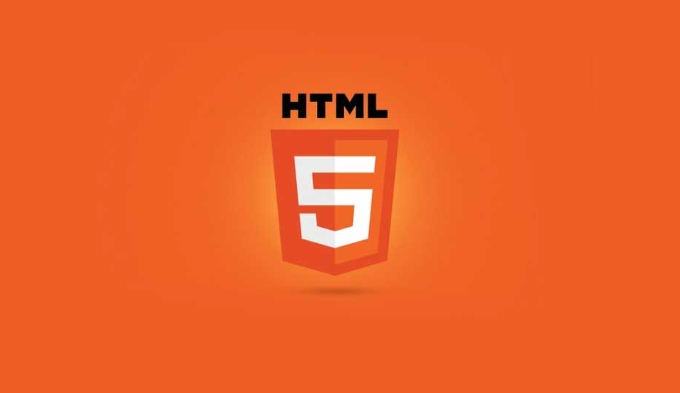How to mark up figures and captions using HTML5 `` and ``.
Jul 04, 2025 am 12:43 AMUsing HTML5's <figure> and 
 to add alt attribute directly to the inline image in the text; make sure
to add alt attribute directly to the inline image in the text; make sure

Adding captions to images is very common in web design. HTML5 provides two semantic tags <figure></figure> and <figcaption></figcaption> to implement this function. Using these two tags can not only improve the clarity of the page structure, but also enhance accessibility and SEO performance.
 ` and `
` and ` Basic usage: <figure></figure> Package content, <figcaption></figcaption> Add instructions
The core approach is to place media content such as pictures and charts in the <figure></figure> tag, and then use <figcaption></figcaption> to add titles or captions. It is not limited to pictures, but can also be used for videos, code segments, etc.
 ` and `
` and `For example:
<figure> <img src="/static/imghw/default1.png" data-src="example.jpg" class="lazy" alt="example picture"> <figcaption>This is the caption of the picture</figcaption> </figure>
The structure written in this way is clear and easier to be recognized by screen readers.
 ` and `
` and `How to layout? Simple CSS to get the style
By default, these tags have no special style and need to be used with CSS to control the appearance. For example, set the centering of the picture, the position of the title and the font style.
You can write this way:
figure {
text-align: center;
margin: 1em 0;
}
figcaption {
font-style: italic;
color: #666;
margin-top: 0.5em;
}This will make the pictures and captions look cleaner and more beautiful. You can also adjust the font size, color or add border background according to the overall style of the web page.
How to deal with multiple pictures? Multiple figures can be used side by side
If you have multiple images on a page that need instructions, it is recommended to use a <figure> element for each image separately. In this way, each diagram and its description are independent and the structure is clearer.
For example:
<figure> <img src="/static/imghw/default1.png" data-src="image1.jpg" class="lazy" alt="first picture"> <figcaption>This is the description of the first picture</figcaption> </figure> <figure> <img src="/static/imghw/default1.png" data-src="image2.jpg" class="lazy" alt="second picture"> <figcaption>This is an illustration of the second picture</figcaption> </figure>
This writing method is suitable for gallery displays or multi-picture layout in articles. If you want them to be arranged horizontally, you can control it with a Flexbox or Grid layout.
Note: Don't abuse it, keep semantic accurate
Although <figure></figure> is convenient, not all images need to use it. <figure></figure> and <figcaption></figcaption> are more suitable only if the image itself is a separate content unit and is equipped with instructions. If it is an inline picture in the main text (such as a small icon in the article), it is enough to directly use <img alt="How to mark up figures and captions using HTML5 `` and ``." > to add alt to describe it.
in addition:
- Make sure
<figcaption></figcaption>is placed inside<figure></figure>, and the location can be before and after the picture. - The
altattribute of the picture cannot be omitted, it has a different function from<figcaption></figcaption>: one is auxiliary description and the other is visual description. - Don't nest multiple
<figcaption></figcaption>in the same<figure></figure>, one is enough.
Basically that's it. It is not complicated to use <figure></figure> and <figcaption></figcaption> well, but it can significantly improve the structure and readability of the page.
The above is the detailed content of How to mark up figures and captions using HTML5 `` and ``.. For more information, please follow other related articles on the PHP Chinese website!

Hot AI Tools

Undress AI Tool
Undress images for free

Undresser.AI Undress
AI-powered app for creating realistic nude photos

AI Clothes Remover
Online AI tool for removing clothes from photos.

Clothoff.io
AI clothes remover

Video Face Swap
Swap faces in any video effortlessly with our completely free AI face swap tool!

Hot Article

Hot Tools

Notepad++7.3.1
Easy-to-use and free code editor

SublimeText3 Chinese version
Chinese version, very easy to use

Zend Studio 13.0.1
Powerful PHP integrated development environment

Dreamweaver CS6
Visual web development tools

SublimeText3 Mac version
God-level code editing software (SublimeText3)

Hot Topics
 Audio and Video: HTML5 VS Youtube Embedding
Jun 19, 2025 am 12:51 AM
Audio and Video: HTML5 VS Youtube Embedding
Jun 19, 2025 am 12:51 AM
HTML5isbetterforcontrolandcustomization,whileYouTubeisbetterforeaseandperformance.1)HTML5allowsfortailoreduserexperiencesbutrequiresmanagingcodecsandcompatibility.2)YouTubeofferssimpleembeddingwithoptimizedperformancebutlimitscontroloverappearanceand
 What is the purpose of the input type='range'?
Jun 23, 2025 am 12:17 AM
What is the purpose of the input type='range'?
Jun 23, 2025 am 12:17 AM
inputtype="range" is used to create a slider control, allowing the user to select a value from a predefined range. 1. It is mainly suitable for scenes where values ??need to be selected intuitively, such as adjusting volume, brightness or scoring systems; 2. The basic structure includes min, max and step attributes, which set the minimum value, maximum value and step size respectively; 3. This value can be obtained and used in real time through JavaScript to improve the interactive experience; 4. It is recommended to display the current value and pay attention to accessibility and browser compatibility issues when using it.
 Adding drag and drop functionality using the HTML5 Drag and Drop API.
Jul 05, 2025 am 02:43 AM
Adding drag and drop functionality using the HTML5 Drag and Drop API.
Jul 05, 2025 am 02:43 AM
The way to add drag and drop functionality to a web page is to use HTML5's DragandDrop API, which is natively supported without additional libraries. The specific steps are as follows: 1. Set the element draggable="true" to enable drag; 2. Listen to dragstart, dragover, drop and dragend events; 3. Set data in dragstart, block default behavior in dragover, and handle logic in drop. In addition, element movement can be achieved through appendChild and file upload can be achieved through e.dataTransfer.files. Note: preventDefault must be called
 How can you animate an SVG with CSS?
Jun 30, 2025 am 02:06 AM
How can you animate an SVG with CSS?
Jun 30, 2025 am 02:06 AM
AnimatingSVGwithCSSispossibleusingkeyframesforbasicanimationsandtransitionsforinteractiveeffects.1.Use@keyframestodefineanimationstagesforpropertieslikescale,opacity,andcolor.2.ApplytheanimationtoSVGelementssuchas,,orviaCSSclasses.3.Forhoverorstate-b
 HTML audio and video: Examples
Jun 19, 2025 am 12:54 AM
HTML audio and video: Examples
Jun 19, 2025 am 12:54 AM
Audio and video elements in HTML can improve the dynamics and user experience of web pages. 1. Embed audio files using elements and realize automatic and loop playback of background music through autoplay and loop properties. 2. Use elements to embed video files, set width and height and controls properties, and provide multiple formats to ensure browser compatibility.
 What is WebRTC and what are its main use cases?
Jun 24, 2025 am 12:47 AM
What is WebRTC and what are its main use cases?
Jun 24, 2025 am 12:47 AM
WebRTC is a free, open source technology that supports real-time communication between browsers and devices. It realizes audio and video capture, encoding and point-to-point transmission through built-in API, without plug-ins. Its working principle includes: 1. The browser captures audio and video input; 2. The data is encoded and transmitted directly to another browser through a security protocol; 3. The signaling server assists in the initial connection but does not participate in media transmission; 4. The connection is established to achieve low-latency direct communication. The main application scenarios are: 1. Video conferencing (such as GoogleMeet, Jitsi); 2. Customer service voice/video chat; 3. Online games and collaborative applications; 4. IoT and real-time monitoring. Its advantages are cross-platform compatibility, no download required, default encryption and low latency, suitable for point-to-point communication
 How to create animations on a canvas using requestAnimationFrame()?
Jun 22, 2025 am 12:52 AM
How to create animations on a canvas using requestAnimationFrame()?
Jun 22, 2025 am 12:52 AM
The key to using requestAnimationFrame() to achieve smooth animation on HTMLCanvas is to understand its operating mechanism and cooperate with Canvas' drawing process. 1. requestAnimationFrame() is an API designed for animation by the browser. It can be synchronized with the screen refresh rate, avoid lag or tear, and is more efficient than setTimeout or setInterval; 2. The animation infrastructure includes preparing canvas elements, obtaining context, and defining the main loop function animate(), where the canvas is cleared and the next frame is requested for continuous redrawing; 3. To achieve dynamic effects, state variables, such as the coordinates of small balls, are updated in each frame, thereby forming
 How to check if a browser can play a specific video format?
Jun 28, 2025 am 02:06 AM
How to check if a browser can play a specific video format?
Jun 28, 2025 am 02:06 AM
To confirm whether the browser can play a specific video format, you can follow the following steps: 1. Check the browser's official documents or CanIuse website to understand the supported formats, such as Chrome supports MP4, WebM, etc., Safari mainly supports MP4; 2. Use HTML5 tag local test to load the video file to see if it can play normally; 3. Upload files with online tools such as VideoJSTechInsights or BrowserStackLive for cross-platform detection. When testing, you need to pay attention to the impact of the encoded version, and you cannot rely solely on the file suffix name to judge compatibility.






